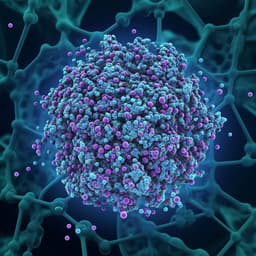
Chemistry
A cage-on-MOF strategy to coordinatively functionalize mesoporous MOFs for manipulating selectivity in adsorption and catalysis
Y. Liang, X. Yang, et al.
Discover an innovative 'Cage-on-MOF' strategy that redefines selectivity in metal-organic frameworks for adsorption and catalysis. This groundbreaking research, conducted by Yu Liang, Xiaoxin Yang, Xiaoyu Wang, Zong-Jie Guan, Hang Xing, and Yu Fang, showcases how oppositely charged porous coordination cages can enhance performance without sacrificing porosity.
Playback language: English
Related Publications
Explore these studies to deepen your understanding of the subject.







